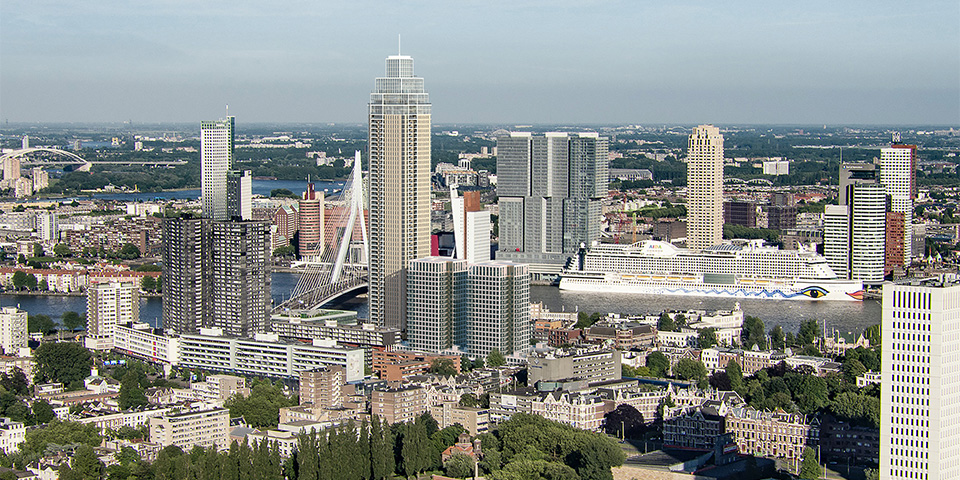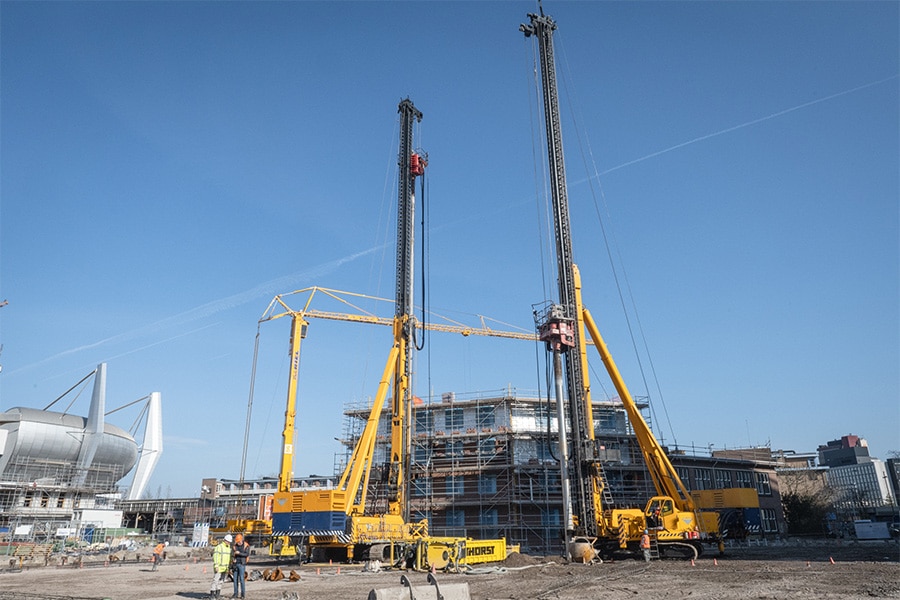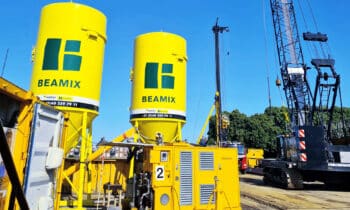
Pushing boundaries with geotechnical engineering
Missing link between design and implementation
If there is very high construction in the Netherlands, chances are that the arithmetic for the foundations and ground structures are made in Vianen. In fact, super high-rise buildings require special knowledge, because existing building standards do not specifically provide for this. Geobest is a consulting firm that operates on this area is pushing the boundaries. And computational masters are also increasingly active across national borders.
The Zalmhaven Tower in Rotterdam is a standard-setting case for geotechnical engineering. Besides two "smaller" towers of 70 meters, this complex on the Zalmhaven includes the tallest tower in the Benelux, which will reach 215 meters high.
Many high-rise buildings
A typical "job" for Geobest. Roel Brouwer and Robert Schippers, both principal consultants, have already provided a great deal of advice and second opinions for high-rise buildings. Schippers: "Such as for the Maastoren, the Post Office, the Wijnhaven and the Glashaven in Rotterdam, a 180-meter tower on the Rijswijkseweg in The Hague and the 130-meter-high Wonderwoods tower next to Central Station in Utrecht. And so too for the Zalmhaven Tower, only that project could not be contained in standards and was therefore more complicated than the others. The piles that have to hold this building in place are twice as long as usual."
Rotterdam settlement behavior
Under all of Rotterdam is a first sand layer at fifteen to twenty meters, on which almost all the buildings stand. Beneath this is a geological formation of hard clay layers that settles under high loads. Schippers: "For the Zalmhavenentoren we calculated that if it were founded on the first sand layer, forty centimeters of settlement would occur. Too much for the two small towers and the adjacent buildings. The solution is to drill through to the next sand layer, to a depth of about seventy meters. Then there will be an acceptable settlement of seven centimeters, as much as from the smaller towers standing on 25-meter piles."

Impression of the Salmon Harbor Tower (center).
Second opinion
The second opinion, mandatory in Rotterdam for both structural and geotechnical design for all buildings in the highest safety class (CC3), was closely followed by the municipality. Schippers: "A lot of super high-rise buildings are planned and with the Zalmhaven knowledge we now have new uniform rules in our hands about building with these long piles. Technically and financially this is now feasible. For us this is interesting because we co-developed that knowledge, which makes us specialists in high-rise buildings and CC3 review. You can say we are the missing link between design and execution."
Scaffolding in Scotland
Geobest not only seeks the heights, but is also increasingly active across borders. Brouwer: "London, Dover, Brazil, Africa: the world is our playground. As a rule, we work for Dutch contractors. For example, Volker Wessels is building scaffolding in Scotland for the Ministry of Defense. There we advised on piling or drilling in rock-hard soil. We also calculated how the lifting pontoon for the piling/drilling rig could operate stably on a sloping riverbed. A very difficult job, but in doing so we show that we not only design but also advise on execution."
Clay and chalk
For a new jetty in London, Geobest performed piling and vibration analyses. Brouwer: "There, tubular piles had to be vibrated through hard clay layers without causing damage to the old Victorian quay walls, a railroad bridge and the complex underground infrastructure. An extensive ground survey beforehand, measurement based on the first vibrated piles and monitoring throughout the process led to damage-free construction." Geobest also performed extensive analyses for a major infrastructure work at Dover. Says Brouwer, "A totally different subsoil. Cretaceous soil changes from stiff to soft and brittle. That means you need a lot more test borings to arrive at a good piling and vibration analysis. In the end, we make sure that every project gets its proper foundation. Doesn't matter where in the world and with what foundation."




